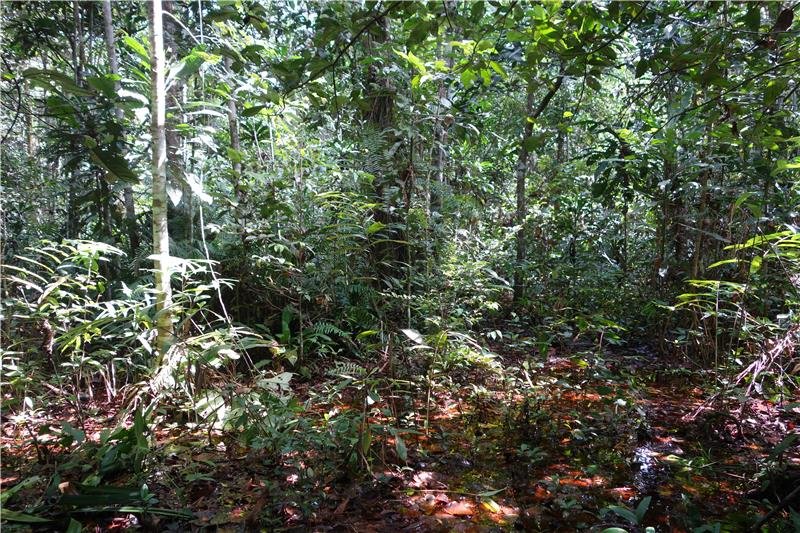 Scientists have discovered a huge pool of carbon in a central African peat swamp that nobody knew about before!
Scientists have discovered a huge pool of carbon in a central African peat swamp that nobody knew about before!
The Cuvette Centrale peatlands in the central Congo basin is believed to be the world’s largest peatland system and the region’s most important carbon sink. Carbon sinks are forests, oceans, or other natural locations that have the ability to absorb carbon from the atmosphere.
The peat contains slowly decaying plants, or vegetation, that have been accumulating for over 10,000 years. The vegetation is a natural storehouse of carbon, which it takes in from the atmosphere. This particular peatland stores about 30 billion metric tons of carbon— almost equal to 20 years’ worth of U.S. fossil fuel emissions!
In order to map out this peatland, satellites were used to take pictures and determine the area of the peat, which is 55,000 square miles.
What Are Peat Swamp Forests?
Peat swamp forests are tropical forests in which the soil is filled with water, which stops dead leaves and wood from completely decomposing or rotting.
Over time, this process creates a high level of peat— accumulated dead vegetation that acts as a huge carbon sink, absorbing carbon from the atmosphere. Swamp forests like these are usually found in cooler parts of the world like northern Russia, Europe, and Canada, as well as in some tropical regions.
Peatlands are divided into two types- bogs and fens. Bogs are peatlands that run on rainfall- most of the water in bogs comes from rain. Fens, on the other hand, run on groundwater and moving water supply, like rivers.
 What Makes Peatlands So Unique?
What Makes Peatlands So Unique?
Peatlands are unique and extremely important because several endangered species of both plants and animals live and depend on peatlands as a habitat.
Unfortunately, peatlands are threatened in several different ways, some of which include overgrazing, repeated burning, and extraction of peat for fuel using mechanized devices.
A recent forest biodiversity study found that about 45% of mammals and 33% of birds living in peat habitats are either threatened or endangered. An important example of this is the highly endangered Sumatran tiger, which is found all over the peat swamps in Asia. The fish found in peat swamps are also very unique and include the smallest fish in the world. Adding to this, one out of ten plants found in peatlands are not found anywhere else in the world.
Why Do These Forests Need Protection?
 The amount of carbon stored in 2.4 acres of a peat forest ranges from 1000 metric tons to 7500 metric tons!
The amount of carbon stored in 2.4 acres of a peat forest ranges from 1000 metric tons to 7500 metric tons!
Carbon is an extremely important element because it is a part of both living and non-living things. Plants take in carbon from the air in the form of carbon dioxide, which is used for photosynthesis. Peat swamps are huge carbon sinks- which means they absorb huge amounts of carbon (greenhouse gases) that if released, would worsen global warming.
Peat swamp forests are also important for humans that live near them because they provide food, water, timber sources, and fuel. During floods, these forests absorb extra water and prevent areas where people live from flooding. And during the dry season, they release the extra water.
Due to climate change, this pattern of water absorption and release is changing, which makes the protection of this ecosystem even more necessary.







